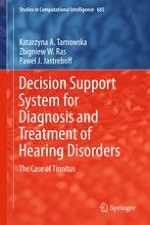The book presents a knowledge discovery based approach to build a recommender system supporting a physician in treating tinnitus patients with the highly successful method called Tinnitus Retraining Therapy.
It describes experiments on extracting novel knowledge from the historical dataset of patients treated by Dr. P. Jastreboff so that to better understand factors behind therapy's effectiveness and better personalize treatments for different profiles of patients.
The book is a response for a growing demand of an advanced data analytics in the healthcare industry in order to provide better care with the data driven decision-making solutions.
The potential economic benefits of applying computerized clinical decision support systems include not only improved efficiency in health care delivery (by reducing costs, improving quality of care and patient safety), but also enhancement in treatment's standardization, objectivity and availability in places of scarce expert's knowledge on this difficult to treat hearing disorder.
Furthermore, described approach could be used in assessment of the clinical effectiveness of evidence-based intervention of various proposed treatments for tinnitus.
